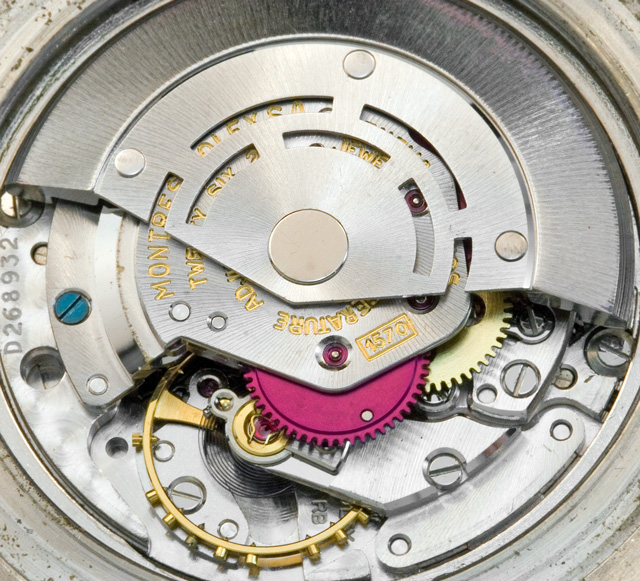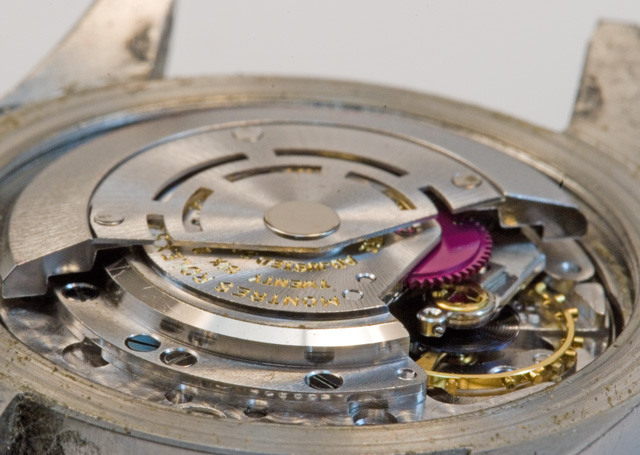The Restoration of a Rolex "Red" Submariner 1680 - Part I
By: John B. Holbrook, II
February 6, 2007
Copyright 2007
This week I had the fortuitous opportunity, quite unforeseen, to buy a vintage Rolex Submariner, model number 1680. The particular 1680 Submariner is a very rare "Red Submariner" - so named due to the red writing on dial. Relatively few were made between about 1969 and 1974, and many of those that existed have fallen victim to the ravages of time. As such, the collector value of these watches is quite high and rising. The example I have purchased is far from pristine, but I feel that with a little work, it could be a fantastic piece. As such, I thought I'd document the restoration process.
Before I begin, if you'd like some more education on Red Submariners, let me recommend a couple of good websites as resources of information - Red Watches and Double Red Sea-Dweller are both excellent sites with lots of information about Red Submariners, and what to look for when purchasing one - not only are counterfeit watches a problem, but some examples you'll run across have been re-dialed with non-factory dials, or have other non-Rolex replacement parts added. Many pitfalls exist when buying a vintage timepiece so be sure you're well educated before you begin.
Here are some "before" photographs of my 1680 Submariner from the day I received it. Admittedly, to the untrained eye this may appear to be just a beat up old watch that has little value:

Clearly the watch has not been cleaned in a very long time, and there's a lot of "stretch" in that old Oyster bracelet. The good news is, the dial is in very good condition. It is not uncommon to see severe corrosion of the hands and markers on a watch of this age, and there's no evidence of the that here. More good news - the bezel insert, while quite faded, appears to be original, which is a huge plus. And while the bracelet is quite worn, it too looks original. So as far as I can see so far, this watch is a perfect candidate for restoration. Here's a few more "before" photos showing the condition of the watch when it was first received:






Alright, further examination of the watch confirms the above - there's really nothing wrong with the exterior of the watch that a good cleaning and polishing won't fix. There's no rust or major physical trauma. And it looks like the watch hasn't been polished much before, which is a good thing - some watches of this age have been over polished. So with the cursory inspection complete, it's now time to begin disassembling the watch for cleaning and further inspection. The first order of business is to remove the bracelet and check between the lugs. Hopefully I won't find any "pitting" between the watch lugs, and the serial & model numbers haven't been filed off or altered:

In the above photo, the model number "1680" is clearly visible, and while there's some dirt and grim, the case area between the lugs is pretty clean

On the opposite side of the case, in between the case lugs, we find the watch serial number - it's a three million series dating it to about 1972. Again, lots of dirt and grime, but no rust or trauma is evident - great signs!
Now it's time to remove the case back and see what kind of condition the movement is in:

More good news - the watch has only been serviced once (watch technicians normally put the service date on the inside of the case back) by Rolex USA in New York in 1988. Good from the perspective that the case hasn't been over polished, but bad from the perspective that it's been nearly 20 years since the movement was last serviced. Let's take a look at the movement and see what kind of condition its in:




Now I'm very encouraged - the Rolex caliber 1570 in this watch is quite clean and running strong despite how long it's been since the watch was last serviced. There's no evidence that the case has been compromised by water, which is also a VERY good sign. All the movement appears to need is a good lubrication and regulation to get it back running within COSC parameters.
While I've been examining the watch head, I've had the bracelet soaking in hot water mixed with dishwashing detergent. After I reseal the case, I get out my trusty soft brush toothbrush and go to work on the bracelet, lugs, and case. As you may have concluded from the above photos, the acrylic crystal looks to be a bit beyond what polishing can do, but I still give it a coat of CrystalClear polish just for fun. I then dry off the watch, and put the bracelet back on. Here are some "after" photos of the watch now that I've given it a good cleaning:


Wow! What a difference! Now we have a much better view of the dial - a very light creamy-yellow patina is evident on the markers and hands, which is very typical of a watch of this era, and related to the luminous material which was applied, and its degradation over time. That said, the dial is extremely good condition, and there are several good signs. Firstly, there's no evidence that there's been any water leaks or moisture damage. Second, there's no evidence of any corrosion on the markers or hands, and what's important here is that the hands match the markers which means I'm likely looking at the original hands - another very important part of this watch's collector value.
Phase 1 of the restoration process is complete - I've thoroughly examined the watch, and assessed whether the watch is a good candidate for restoration, and all signs seem to point that is is. The next step in the restoration process will be for me drop off the watch to a watch service center that I feel very comfortable with in working on a vintage Rolex. Rolex USA no longer services watches this old unfortunately, and while I could send the watch to Rolex in Geneva and wait several weeks, if not months, I know that the work I need is minor, and be performed in less than a week right across town. I will have the watch polished, the crystal replaced with a Rolex acrylic crystal appropriate for the 1680, and I will have the movement fully serviced.
Afterward, I will have some decisions to make about where to go next with the restoration of this watch. Many vintage collectors would prefer the current bezel be kept on the watch, as well as keeping the original bracelet on the watch. If I intend to keep and wear the watch, I will want to, at the very least, replace the bezel insert, and quite possible replace the bracelet (my choice would be a 93150 bracelet with 580 ends). So, while the watch is in for service, I think I'll begin the process of sourcing a 1680 bezel insert to replace the current faded one that's missing the 12 o'clock "pearl." And I'll think about whether or not I want to invest in a new bracelet. Regardless, I will keep and store all my original parts for their collectors value.
Stay tuned for part two of this restoration article, to see how the watch looks once it comes back from being serviced.
